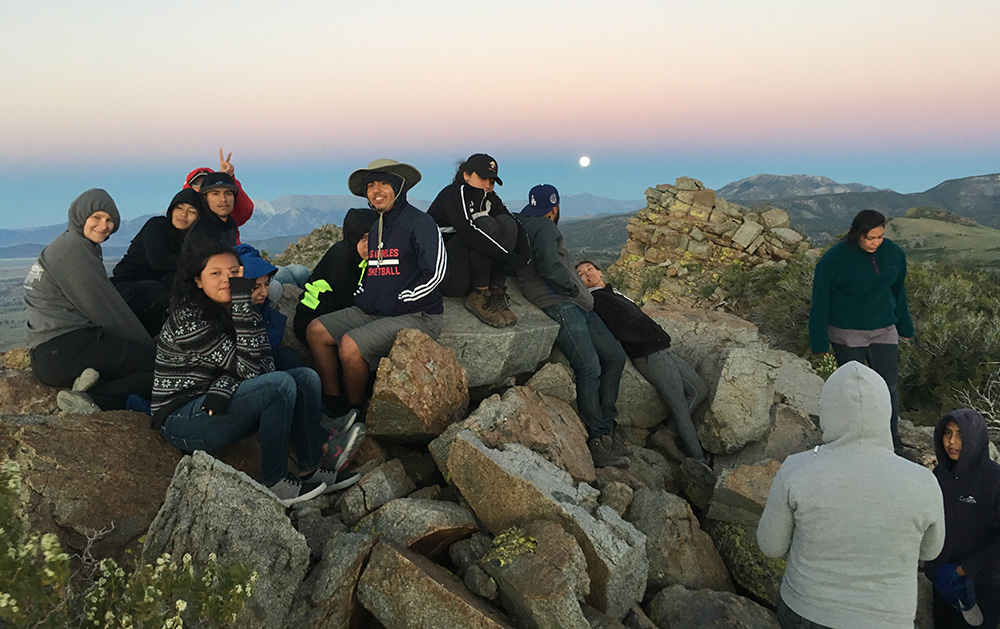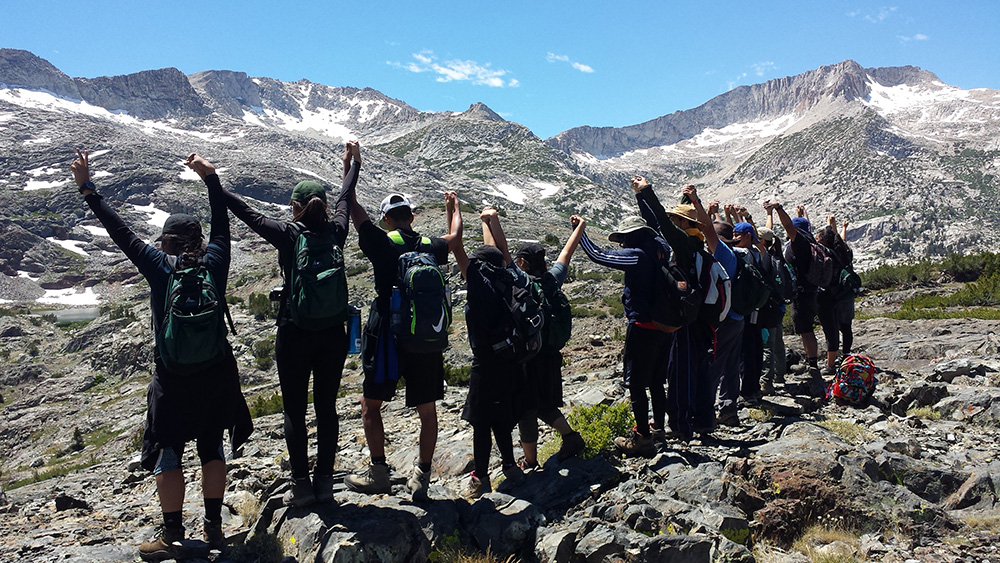
This post was written by Lisa Godenick, 2016 Outdoor Education Instructor.
The full moon begins to show its subtle beauty as I sit atop Sagehen Mountain looking towards the White Mountains. We are here with Pacoima Beautiful, the first environmental justice non-profit in the Northeast San Fernando Valley.

There are ten students and four leaders, and we are all huddled together beneath the stars in awe of the moonrise; nothing separates us from the Milky Way. The air feels cool, but not cold, despite the wind. After contemplation, the students embark on a solo walk back to the vehicles. This is a chance for everyone in the group to meditate and practice presence, something difficult to come by in our modern world.
As I walk down the sand path, I reflect on the current group. They have been on the road four days already before stopping at the Mono Basin Outdoor Education Center (OEC) and you can tell—teamwork and chores are seamlessly accomplished, like a well-oiled machine. For a group of 14 people, we are already doing so many activities. These students are so excited to learn about the wildflowers, about the volcanoes, about their watershed. One leader even said “I waited an entire year to swim in Mono Lake and see mile zero of the LA Aqueduct.” The leaders are not the only people intrigued by the Eastern Sierra; Mono Lake captures the attention of individuals of all ages and backgrounds. Earlier in the day one of the students had asked “How can we best promote water conservation in our hometown?”
How can we? I begin to think about this question deeper as I round the bend in the path. I realize that water conservation and a love for the earth can only come through education and experience, both of which the OEC program offers. After all, how can you love something that you have not been in? Seen, touched, smelled, tasted, breathed? Experiential education offers something that typical classrooms do not—the chance to be part of the environment and ecosystem.
For kids, this is the difference between caring about something and feeling empowered to make a difference and merely reading about a conservation issue in a textbook. As one Pacoima student expressed, “This program motivated me to continue to save water even if you’re the only person doing it. One person can make a big difference.” Experiential education is the opportunity to be a whole person—to use both sides of the brain and heart.

This type of education and experience is brand new for many of the students that come through the OEC program. They are taking a leap of faith for five days in trusting us to take them into the mountains, sometimes in the dark of night. “I didn’t know what I was doing and in the end I opened my eyes and it was amazing,” said one student. These thoughts are in my head as I walk up the hill towards the cars. I see the group waiting for me, watching the moon continue her beautiful ascent towards constellations. I feel at home. Another sweet walk.
